Where Is My Moto E4 Is Uploading Items
Motorola Moto E4 Smartphone Review
Removable. In this case we hateful information technology in a positive style, since the bombardment tin can exist removed in the Moto E4. The smartphone is as well quite affordable and offers a fingerprint sensor. You can observe out in the exam whether the contest needs to brace for this.
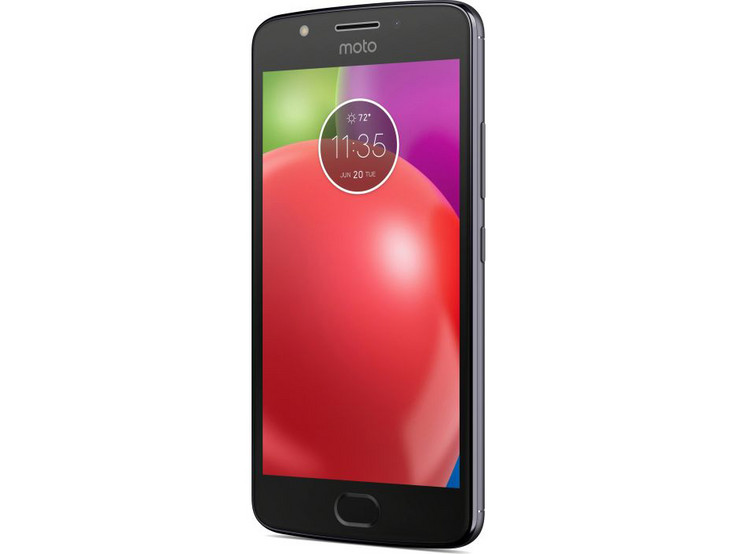
For the original German review, meet hither.
The Moto E4 is a smartphone available for barely 160 Euros (~$190; bachelor for $130 in the US), that places it in the entry-level segment. Yous get a meaty five-inch case and fifty-fifty a removable bombardment, which is a rarity with current smartphones. Information technology came on the market together with the Moto E4 Plus, which offers a much larger battery and ameliorate cameras but and then costs near forty Euros (~$48) more. The predecessor, the Moto E3, was once again considerably cheaper, so it will be interesting to come across where Lenovo made the improvements.
Every bit comparison devices we utilise similarly priced v-inch smartphones, such as the LG K8, the Gigaset GS170, the Samsung Galaxy J3, and the Huawei Y6.
Display
5.00 inch 16:9, 1280 x 720 pixel 294 PPI, IPS, glossy: yes
Storage
xvi GB eMMC Flash, 16 GB
, 10 GB costless
Weight
151 g ( = 5.33 oz / 0.33 pounds), Power Supply: 56 g ( = ane.98 oz / 0.12 pounds)
Annotation: The manufacturer may use components from different suppliers including display panels, drives or memory sticks with like specifications.
Case
Compared to the predecessor, the design has been adjusted. The long slot in the lesser area, behind which the speaker was, has disappeared and the speaker now radiates towards the back. What has remained is the removable back, which is made from metallic. In the Moto E4 it is incredibly difficult to take off and tin but be removed using a lot of force. In addition, the thin metal example bends easily so does not fit perfectly onto the back anymore.
Underneath the back comprehend is the battery which you take to remove to become at the SIM card or microSD, so a hot swap with the phone running is not possible. This is surprising, since in the Moto E4 Plus you can exchange the cards while the phone is running without any problems. The case is fairly stable, and pressure on the front or dorsum inappreciably reaches the brandish. When twisting information technology, the case does not creak, simply at that place are small traces in the liquid crystal.
What we like about Lenovo'south rounded blueprint linguistic communication is that it makes the smartphone sit down in the hand comfortably. At 151 grams, the Moto E4 is not particularly a lightweight, merely it is not much heavier than comparable smartphones either.

Motorola Moto E4
Size Comparing
❌
Features
Compared to the Moto E3, the working retentivity and storage were each doubled: at that place is 2 GB of RAM and 16 GB of memory storage in the Moto E4. This is the standard equipment in this price range.
At the lesser edge is a micro-USB port. In this price class, USB-C is even so rather unusual. USB-OTG is supported, so y'all tin connect external information storage and fifty-fifty charge other devices with the battery in the Moto E4. MicroSD cards tin can be inserted into the dedicated slot. Lenovo promises upwards to 32 GB, but our 64-GB card also works flawlessly. You can format the cards equally internal or external storage. With the latter, y'all tin can use the cards also in other devices, just then you cannot move apps onto the microSD.
Software
Lenovo uses Android seven.0 as the operating organisation. Besides the simply released Android viii which can only exist found on a few devices, the more current version is vii.1.i, but neither of them are available for the Moto E4. At the fourth dimension of testing, the security patches were already half a year onetime, and it is unlikely that in that location will be updates, since they are rare in this price class.
Android purists will be happy that Lenovo does not install its own UI simply uses a pure Android. In that location are also hardly any additional apps and no preinstalled advertising apps on the smartphone either. You tin actuate a few additional functions with the Moto app, for example, if you lift up the smartphone, the display can automatically wake upwardly in reduced course and testify the time and notifications. Unfortunately, this does not always work perfectly with the Moto E4 but at times is delayed considerably. Just in principle information technology is a great feature.
Communication and GPS
With eight LTE bands the Lenovo Moto E4 looks good. At least in nearby foreign countries you don't need to worry about finding a network. In this price class, LTE Cat. four is standard. The reception in the inner-metropolis areas of the German D2 net is okay, and nosotros tin can get half of the reception bars also indoors.
For WLAN networks, the 802.11 b/g/n standards are supported. The less used and therefore often faster 5-GHz band is not available. Even in this less demanding price class, the WLAN speeds are amid the worst and fifty-fifty the predecessor was faster. We load various websites near the router to see how this looks in practice. The web pages render quite slowly and pictures ofttimes accept 10 seconds to load. At a 10-meter distance from the router and through iii walls, 3/4 of the signal still arrives, but loading the pages is even slower than direct adjacent to the router.
| Networking | |
| iperf3 Client (transmit) one grand 4M x10 Netgear AX12 | |
| Samsung Milky way J3 2017 | |
| Gigaset GS170 | |
| Lenovo Moto E3 | |
| LG K8 2017 | |
| Huawei Y6 2017 | |
| Lenovo Moto E4 | |
| iperf3 Client (receive) 1 g 4M x10 Netgear AX12 | |
| LG K8 2017 | |
| Gigaset GS170 | |
| Lenovo Moto E3 | |
| Samsung Galaxy J3 2017 | |
| Huawei Y6 2017 | |
| Lenovo Moto E4 | |
While indoors it is unable to locate our position, we are quickly located within an accurateness of eight meters (~26 ft) outdoors. This is rather inexact. Our practical examination of the precision locating our position includes a tour on a mountain bike. As well the Lenovo Moto E4, nosotros besides took the professional Garmin Edge 500 navigation device for comparing. On our test unit of measurement, the measured distance is 280 meters (~919 ft) shorter, which is quite a big deviation on our half dozen.5 km (~four miles) test route. In sections, the Moto E4 places us completely off the route, and anyone who wants to navigate with this smartphone should not rely on it too much.
Telephone and Telephone call Quality
Lenovo uses Android's standard app for the phone functions of the smartphone. This app is clear and its operation intuitive. Initially you encounter the entered favorites or often used contacts. You can display the often niggling-used telephone keys with an entry cardinal, and tabs on top offer the listing of phone calls and contacts.
The call quality is decent. The ear piece can get adequately loud but then booms quite a bit. The chat partner is easily understandable and sounds fairly natural. The sound is pleasantly racket free. The microphone records our vocalisation quite well and is also able to deal with fairly loud or depression voices. On the speaker phone, the voice of our conversation partner sounds much less full and the highs and mids are strongly emphasized. Even so, it is still easily understandable. The microphone is expert hither too and only has problems to record very low voices from time to time.
Cameras
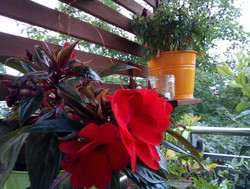
While the Moto E4 Plus has a 13-MP photographic camera on the back, you accept to make do with an viii-MP camera in the Moto E4. This is the same as in the Moto E3, only nowadays non suitable anymore even in this toll class. Pictures taken with the main camera appear slightly blurry, and larger colour areas appear spotty. In add-on, the photographic camera could exist brighter. The dynamic in bright areas is fairly good and you can also still brand out a few details in dark areas. You can have videos at a maximum 720p resolution with 30 fps. The autofocus attracts attention with some annoying pumping, and then it goes through all the stages of sharpness and blurriness, earlier it finds the right one. The images then appear adequately sharp, merely larger areas are poor in detail. The exposure adjusts to the environment quite fast and accurately.
The front camera has a resolution of 5 megapixels, which is the norm in nearly all the devices of this cost level and even above. The pictures announced with slightly cool colors. You accept to continue the right distance to the object through the fixed focus, otherwise the image becomes blurry. The dynamic in dark areas is quite good, but bright areas become quickly besides bright.
Image Comparing
Choose a scene and navigate within the first epitome. 1 click changes the position on touchscreens. One click on the zoomed-in paradigm opens the original in a new window. The beginning epitome shows the scaled photograph of the test device.
Scene 1Scene 2Scene three

click to load images

click to load images
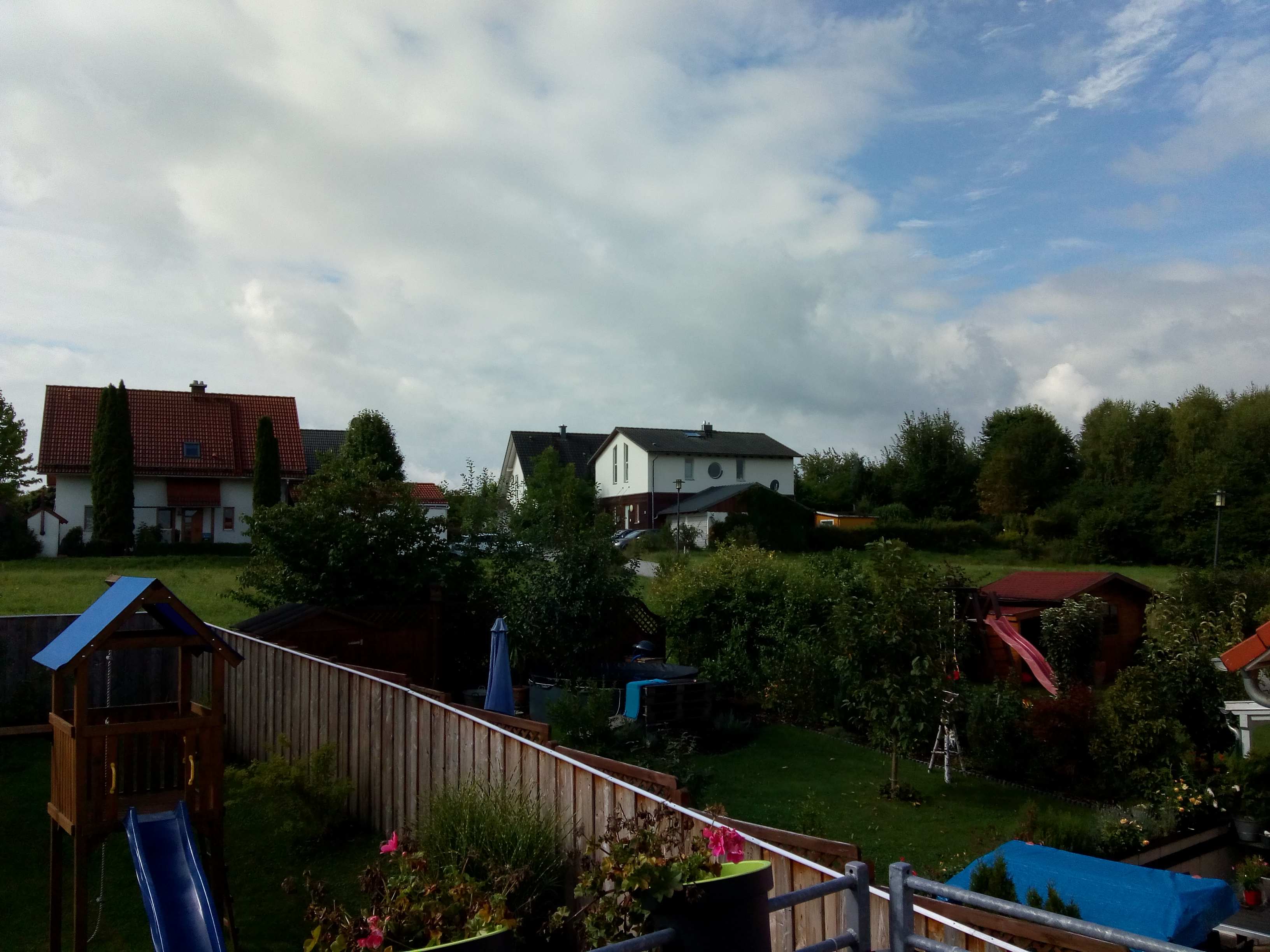
click to load images
The main camera also must prove itself in our examination lab, where we utilize controlled light weather condition for easier comparison of the camera images. Color areas appear in parts very pixelated with the camera of the Moto E4, and the edges are ofttimes blurry. The color brandish is clearly as well stake. Here the Samsung Galaxy J3, for example, does much improve in terms of the camera.
Accessories and Warranty
Except for the charger and a USB cable, in that location are no accessories in the box. The warranty of the device is limited to 24 months.Please run into our Guarantees, Return policies and Warranties FAQ for state-specific information.
Input Devices and Operation
Being faithful to the Motorola philosophy, Lenovo uses Google'south GBoard standard app as the virtual keyboard. Information technology is intuitive to operate, very make clean, and information technology still has strong functionalities.
There is a fingerprint sensor below the screen, which is always a pocket-sized sensation in this price class. It operates very fast and tin can too be used for Android navigation. A short press brings you dorsum to the Home screen and a longer press switches the smartphone into standby mode. By swiping, you lot go back or become to the last opened app. If you don't want that, you can just utilise the on-screen keys for navigation.
Although the hardware keys for standby and volume are set tightly into their places on the right case side, their pressure point is slightly spongy.
Display
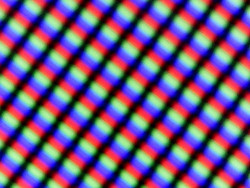
A brandish with 1280x720 pixel resolution is standard in this cost course, and with the Moto E4, Lenovo sticks to this. The 5-inch screen appears sufficiently sharp, but of class Total HD displays appear even slightly sharper in a directly comparing. Compared to the predecessor, the screen became a little brighter and at present achieves a very good 474 cd/thousand² on average. However at 87%, the brightness distribution is non quite so even anymore and small brightness differences in large color areas are even visible to the naked eye.
| 511 cd/m² | 487 cd/chiliad² | 452 cd/thousand² | ||
| 491 cd/m² | 488 cd/m² | 447 cd/m² | ||
| 468 cd/m² | 479 cd/grand² | 443 cd/m² | ||
Distribution of brightness
X-Rite i1Pro 2
Maximum: 511 cd/m² (Nits) Average: 474 cd/m² Minimum: 7.21 cd/m²
Brightness Distribution: 87 %
Center on Battery: 488 cd/m²
Contrast: 1627:i (Black: 0.three cd/1000²)
ΔE Color 5.4 | 0.59-29.43 Ø5.4
ΔE Greyscale v.5 | 0.64-98 Ø5.6
96.2% sRGB (Calman 2D)
Gamma: 2.27
| Lenovo Moto E4 IPS, 1280x720, 5.00 | Huawei Y6 2017 IPS, 1280x720, 5.00 | Samsung Galaxy J3 2017 PLS, 1280x720, 5.00 | Gigaset GS170 IPS, 1280x720, 5.00 | LG K8 2017 IPS, 1280x720, five.00 | Lenovo Moto E3 IPS, 1280x720, five.00 | |
|---|---|---|---|---|---|---|
| Screen | 22% | 8% | -51% | -35% | -xvi% | |
| Effulgence middle | 488 | 438 -x% | 502 three% | 418 -14% | 358 -27% | 436 -11% |
| Brightness | 474 | 432 -9% | 494 iv% | 418 -12% | 351 -26% | 420 -xi% |
| Brightness Distribution | 87 | ninety 3% | 89 ii% | 92 half-dozen% | 93 7% | 91 5% |
| Black Level * | 0.three | 0.xiii 57% | 0.35 -17% | 0.45 -l% | 0.49 -63% | 0.41 -37% |
| Contrast | 1627 | 3369 107% | 1434 -12% | 929 -43% | 731 -55% | 1063 -35% |
| Colorchecker dE 2000 * | 5.four | 4.eight 11% | 4.6 fifteen% | nine.7 -lxxx% | seven.1 -31% | 5.iv -0% |
| Colorchecker dE 2000 max. * | ix | eleven.iv -27% | viii 11% | xviii.ix -110% | 14.nine -66% | x -eleven% |
| Greyscale dE 2000 * | 5.5 | iii.ii 42% | 2.v 55% | 11.3 -105% | half dozen.5 -18% | vii -27% |
| Gamma | two.27 97% | ii.23 99% | 2.29 96% | 2.27 97% | 2.12 104% | 2.13 103% |
| CCT | 7397 88% | 7090 92% | 6351 102% | 10414 62% | 8166 80% | 8318 78% |
* ... smaller is better
Screen Flickering / PWM (Pulse-Width Modulation)
ℹ
To dim the screen, some notebooks volition simply cycle the backlight on and off in rapid succession - a method called Pulse Width Modulation (PWM) . This cycling frequency should ideally be undetectable to the human eye. If said frequency is as well depression, users with sensitive eyes may experience strain or headaches or fifty-fifty notice the flickering altogether.
| Screen flickering / PWM not detected | 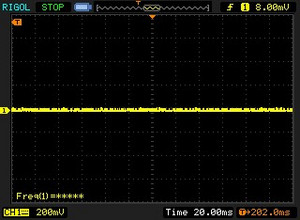 | ||
| In comparing: 52 % of all tested devices exercise not use PWM to dim the display. If PWM was detected, an average of 22039 (minimum: 5 - maximum: 3846000) Hz was measured. | |||
A proficient black value of 0.3 cd/m² together with the adept maximum brightness leads to the contrast ratio of 1627:i. This is a very good value, simply our test unit of measurement nonetheless cannot stand confronting the Huawei Y6 which has an extremely high contrast. You tin activate the "Intensive" color style inorth the settings to make the colors appear slightly more vibrant, otherwise they announced quite natural. It is merely a affair of taste whichever you adopt. The examination unit cannot reach theslap-up colors of an AMOLED brandish, though.
This also shows in a more detailed examination of the screen with the spectral photometer and the CalMAN software. In addition to a slight blueish tint, the accurateness of the color brandish is only mediocre. At least more than 96% of the sRGB color space is covered according to CalMAN. Withal, this measurement shows more of a trend.
Display Response Times
ℹ
Display response times show how fast the screen is able to change from one color to the next. Slow response times can lead to afterimages and tin cause moving objects to announced blurry (ghosting). Gamers of fast-paced 3D titles should pay special attending to fast response times.
| ↔ Response Time Blackness to White | ||
|---|---|---|
| 32 ms ... ascent ↗ and autumn ↘ combined | ↗ 15 ms rise | 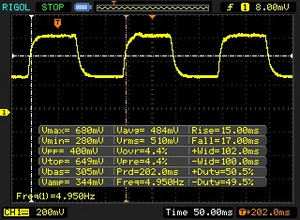 |
| ↘ 17 ms autumn | ||
| The screen shows ho-hum response rates in our tests and will be unsatisfactory for gamers. In comparison, all tested devices range from 0.8 (minimum) to 240 (maximum) ms. » 81 % of all devices are ameliorate. This means that the measured response fourth dimension is worse than the average of all tested devices (23.5 ms). | ||
| ↔ Response Time 50% Grey to eighty% Grey | ||
| 24 ms ... rising ↗ and fall ↘ combined | ↗ xiii ms rise | 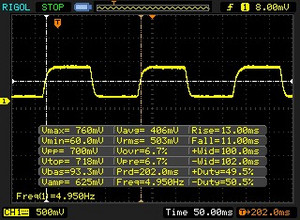 |
| ↘ 11 ms fall | ||
| The screen shows expert response rates in our tests, but may be as well slow for competitive gamers. In comparing, all tested devices range from 0.692 (minimum) to 636 (maximum) ms. » 21 % of all devices are better. This means that the measured response time is better than the boilerplate of all tested devices (37.ane ms). | ||
Thanks to its bright display, you can besides use the Moto E4 outdoors, but of course the reflective surface volition exist a hindrance in vivid surroundings. The brightness sensor adjusts the brandish brightness fittingly and quickly.
The viewing angles of the display are proficient, thank you to IPS, and you tin recognize the image on the screen from whatever perspective. Still, you practise need to count on color and brightness shifts.
Performance
The Lenovo Moto E4 is equipped with a Mediatek MT6737, which has four cores and a maximum 1250 MHz clock speed. This makes the device noticeably faster than its predecessor, then that a 20 to xxx% higher operation is possible in the benchmarks. Compared to similarly priced devices, the Moto E4 is in the center of the field. The Huawei Y6 is considerably faster, while the LG K8 and the Gigaset GS170, which uses the same SoC, are about at the same level.
An ARM Mali-T720 MP2 with ii cores and a 650 MHz clock speed handles the graphics calculations. With this, the Moto E4 achieves a performance in the middle of the field of the comparison devices. At least all the benchmarks will run, while the Moto E3 and LG K8 in parts don't go any results at all here. This is a practiced indication that the Moto E4 should be more stable and be able to handle more apps than those devices.
In the browser performance, the Moto E4 places more in the rear of the comparison field. Even though more than enervating HTML5 games such equally the pinball game at letsplay.ouigo.com stutter at times, they are notwithstanding smoothly playable.
In terms of accessing the storage, our test unit does not fare that badly, but it remains only on the level of the price course. The access to our reference microSD card, a Toshiba Exceria Pro M501, is quite fast, simply it cannot make employ of the potential fast access rates of the card by any means. In the internal storage random writes, pregnant the writing onto randomly distributed blocks, the memory is quite fast, while all the remaining admission speeds are rather mediocre. In general, the load times of the device are average.
| Lenovo Moto E4 | Huawei Y6 2017 | Samsung Galaxy J3 2017 | Gigaset GS170 | LG K8 2017 | Lenovo Moto E3 | |
|---|---|---|---|---|---|---|
| AndroBench 3-5 | -0% | ii% | -26% | 39% | -41% | |
| Sequential Read 256KB | 187.6 | 202.6 viii% | 177.7 -v% | 197.9 v% | 270.8 44% | 141.four -25% |
| Sequential Write 256KB | 45.3 | 66.9 48% | 51 13% | 44.79 -i% | 84.6 87% | 37.iii -18% |
| Random Read 4KB | 18.7 | 25.93 39% | 24 28% | 18.34 -two% | 41.6 122% | 16 -xiv% |
| Random Write 4KB | 29.2 | twenty.54 -xxx% | 9.v -67% | 10.45 -64% | 12.5 -57% | viii -73% |
| Sequential Read 256KB SDCard | 65.4 | 48.four -26% | 70.3 7% | 37.41 ? -43% | 78.6 ? 20% | 29.78 ? -54% |
| Sequential Write 256KB SDCard | 44.9 | 26.4 -41% | 59.6 33% | 21.34 ? -52% | 52.two ? 16% | 17.49 ? -61% |
Games
The demanding Asphalt 8 racing game does not run smoothly in full detail. But 13 fps is reached on average, and with minimum item it reaches 29 fps which is slightly less than the completely smooth thirty frames. Dead Trigger 2, a zombie shooter, is less enervating and it runs smoothly also on the Moto E4. The same goes for simpler games such equally Angry Birds.
Operation creates no bug, and the touchscreen and position sensor function reliably and without delay.
| Asphalt 8: Airborne | |||
| Settings | Value | ||
| loftier | 13 fps | ||
| very low | 29 fps | ||
| Expressionless Trigger two | |||
| Settings | Value | ||
| high | thirty fps | ||
Emissions
Temperature
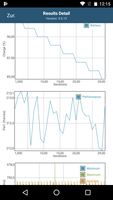
Under maximum load our test unit reaches a temperature of 35 °C (95°F) at near, which we measured at the front in the camera expanse. This is a warming which can inappreciably be felt. Compared to the idle mode, the device warms up simply past 3 °C (~five°F) at this place.
We do not expect a limitation to the performance via throttling. In the GFXBench Manhattan three.1 battery test which renders a sequence 30 times and so compares the accomplished frames, at that place are only minimal differences between the beginning and end of the examination run. Thus the performance can also be maintained after a longer load.
| |||||||||||||||||||||||||
| Maximum: 35 °C = 95 F Average: 32.4 °C = xc F | |||||||||||||||||||||||||
| |||||||||||||||||||||||||
| Maximum: 34.five °C = 94 F Average: 32.8 °C = 91 F | |||||||||||||||||||||||||
Power Supply (max.) 37.ane °C = 99 F | Room Temperature 22 °C = 72 F | Voltcraft IR-350
| |||||||||||||||||||||||||
| Maximum: 32 °C = ninety F Average: 29.ii °C = 85 F | |||||||||||||||||||||||||
| |||||||||||||||||||||||||
| Maximum: 29.four °C = 85 F Average: 28.5 °C = 83 F | |||||||||||||||||||||||||
Power Supply (max.) 31 °C = 88 F | Room Temperature 22 °C = 72 F | Voltcraft IR-350
(±) The average temperature for the upper side under maximal load is 32.4 °C / 90 F, compared to the average of 32.8 °C / 91 F for the devices in the grade Smartphone.
(+) The maximum temperature on the upper side is 35 °C / 95 F, compared to the average of 35.1 °C / 95 F, ranging from 22 to 52.9 °C for the form Smartphone.
(+) The lesser heats up to a maximum of 34.v °C / 94 F, compared to the average of 33.8 °C / 93 F
(+) In idle usage, the average temperature for the upper side is 29.ii °C / 85 F, compared to the device boilerplate of 32.8 °C / 91 F.
Speaker
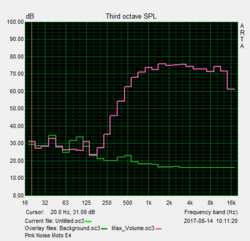
The small mono speaker is positioned at the dorsum. This is not a particularly skilful position, since information technology tin can easily be muffled by the hand or on soft surfaces. The maximum volume of the speaker is 85.6 dB(A), which can fill a small room. However, the speaker emphasizes the highs and the low mids and bass is lacking, then listening to music is not really enjoyable. At least the highs are not booming uncomfortably but are all the same recognizable with college volumes. The speaker is proficient enough to listen to music or videos, just anyone wanting a ameliorate sound needs to apply headphones or external speakers, which tin easily be connected to the three.5-mm audio port or via Bluetooth to receive a clean sound.
Lenovo Moto E4 audio analysis
(+) | speakers tin can play relatively loud (85.vi dB)
Bass 100 - 315 Hz
(-) | nearly no bass - on average 39.8% lower than median
(±) | linearity of bass is average (11% delta to prev. frequency)
Mids 400 - 2000 Hz
(±) | reduced mids - on average 5.i% lower than median
(±) | linearity of mids is boilerplate (7.6% delta to prev. frequency)
Highs 2 - 16 kHz
(+) | balanced highs - only ii.4% abroad from median
(+) | highs are linear (two.1% delta to prev. frequency)
Overall 100 - 16.000 Hz
(±) | linearity of overall sound is average (24.9% difference to median)
Compared to same course
» 62% of all tested devices in this class were better, xi% similar, 27% worse
» The all-time had a delta of 12%, average was 23%, worst was 65%
Compared to all devices tested
» 77% of all tested devices were better, vi% similar, 17% worse
» The best had a delta of 3%, average was 20%, worst was 65%
Huawei Y6 2017 audio assay
(+) | speakers can play relatively loud (83.4 dB)
Bass 100 - 315 Hz
(-) | nearly no bass - on average 29.vi% lower than median
(±) | linearity of bass is average (12.3% delta to prev. frequency)
Mids 400 - 2000 Hz
(±) | reduced mids - on average v.8% lower than median
(+) | mids are linear (6.eight% delta to prev. frequency)
Highs two - xvi kHz
(±) | higher highs - on average 7.2% higher than median
(+) | highs are linear (4.4% delta to prev. frequency)
Overall 100 - sixteen.000 Hz
(±) | linearity of overall sound is average (26.one% deviation to median)
Compared to same grade
» 71% of all tested devices in this course were meliorate, 8% like, 22% worse
» The best had a delta of 12%, average was 23%, worst was 65%
Compared to all devices tested
» 82% of all tested devices were meliorate, iv% similar, xiv% worse
» The best had a delta of three%, boilerplate was 20%, worst was 65%
Frequency comparison (checkboxes selectable!)
Battery Life
Power Consumption
The Moto E4 likes to employ a petty more power, in item in idle mode. When the device is turned on but there is no load, at 2.38 watts on average, the smartphone uses quite a lot of ability. The predecessor was overall more efficient and the comparing devices also make do with much less power. Notwithstanding, under load the energy consumption is insufficiently depression.
| Lenovo Moto E4 2800 mAh | Samsung Milky way J3 2017 2400 mAh | Gigaset GS170 2500 mAh | LG K8 2017 2500 mAh | Lenovo Moto E3 2800 mAh | |
|---|---|---|---|---|---|
| Power Consumption | 3% | xiv% | xiii% | 17% | |
| Idle Minimum * | 0.87 | 0.82 6% | 0.54 38% | 0.65 25% | 0.79 nine% |
| Idle Average * | ii.38 | 1.94 xviii% | 1.56 34% | 1.six 33% | 1.seven 29% |
| Idle Maximum * | two.47 | 2.06 17% | ane.half dozen 35% | i.62 34% | 1.72 30% |
| Load Average * | 2.63 | 3.31 -26% | 3.18 -21% | 2.97 -13% | 2.65 -one% |
| Load Maximum * | 3.86 | 3.89 -one% | iv.42 -fifteen% | 4.34 -12% | iii.16 18% |
* ... smaller is amend
Battery Life
With 2800 mAh or 10.6 Wh, the battery has quite a high capacity. Yet, a runtime of only 8:42 hoursin the WLAN test is disappointing. The Galaxy J3 by Samsung gets three hours more out of a smaller battery. The predecessor lasted much longer also. The idle bombardment life of not even 22 hours is much less compelling. We expected more from the relatively large battery capacity of the Moto E4, and the standard battery life for a device of this price course remains unchanged. However, it is still plenty for a workday at the office and fifty-fifty for the dark afterwards. During average use, the device has to be plugged in the adjacent twenty-four hours, though. Charging takes just beneath two hours.
The removable battery is definitely a large advantage. Anyone who needs a longer battery life can simply have a second charged battery and use that when necessary.
Battery Runtime
| Idle (without WLAN, min brightness) | 21h 42min | |
| WiFi Websurfing | 8h 42min | |
| Large Buck Bunny H.264 1080p | 10h 08min | |
| Load (maximum effulgence) | 5h 16min |
Pros
+ removable bombardment
+ defended microSD slot
+ not sensitive to pressure level
+ quite a lot of LTE bands
+ fingerprint sensor
+ pure Android
+ bright display, good contrast
+ hardly warms up
+ decent phonation quality
Cons
- cover is very tight
- back cover bends easily
- outdated security patches
- slow WLAN
- quite inaccurate GPS
- camera images blurry in parts
- high power consumption
Verdict
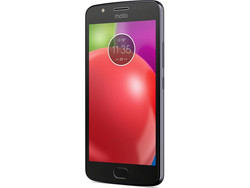
The Moto E4 is an affordable smartphone that offers some highlights, such as a fingerprint sensor, pure Android, and removable battery. If yous don't consider the camera the most important characteristic in a smartphone or depend on exact navigation, so yous get the performance typical for this toll form in all the other areas: the vocalization quality is decent, the operation appropriate, and the bombardment life suitable in exercise.
Compared to the predecessor, the higher price is justified by the metal case, the higher performance, and the boosted storage. The reason why entry-level phones in particular cost a few Euros more this year lies to a large extent in the storage chips which are currently very expensive. The Moto E3, for example, offered a longer battery life, which makes taking a look at information technology likewise worthwhile. Every bit a notation to anyone who is currently looking at the Moto E4 Plus: it is much larger and heavier, and the battery is not removable, but it also has a much larger capacity. Compared to the Moto E4, the performance is well-nigh the same. For anyone who would like to find out more, nosotros have a detailed review of the Moto E4 Plus.
The Moto E4 is a solid entry-level smartphone that has only few essential weaknesses and convinces with a removable battery and fingerprint sensor. All the same, the camera should not be very important to the user, since the prototype quality is rather meager.
When buying a smartphone, you should ever counterbalance which features are really of import to you. If a removable battery and a fingerprint sensor belong to these features, the Moto E4 is surely a device you should consider. But anyone who hopes for a long life of the built-in bombardment should rather consider the Samsung Galaxy J3, which at this point falls in the aforementioned cost range every bit the Moto E4. The Huawei Y6 offers near operation for the buck.
Lenovo Moto E4 - 2017-09-08 09/08/2017 v6(old)
Florian Wimmer
Smartphone - Weighted Boilerplate
Pricecompare
Florian Wimmer, 2017-09-12 (Update: 2019-04- five)
Source: https://www.notebookcheck.net/Motorola-Moto-E4-Smartphone-Review.247644.0.html

0 Response to "Where Is My Moto E4 Is Uploading Items"
إرسال تعليق